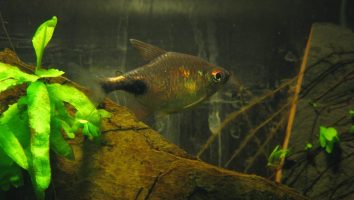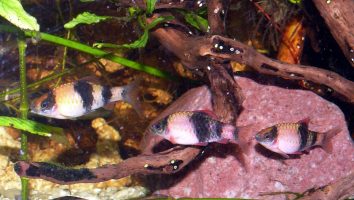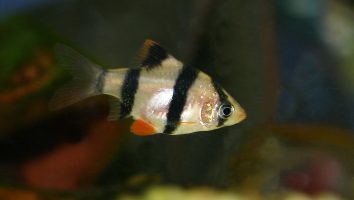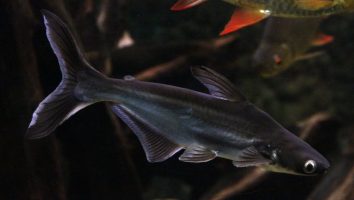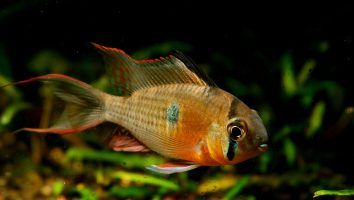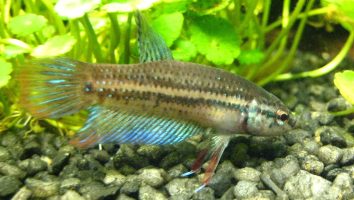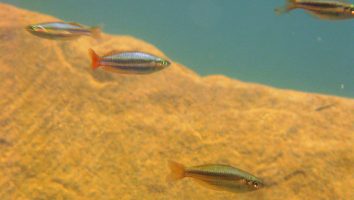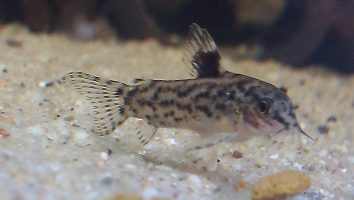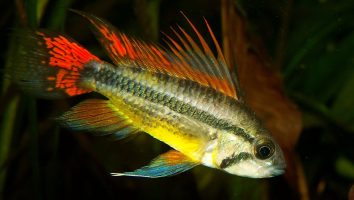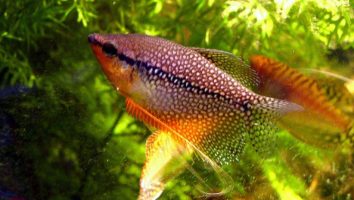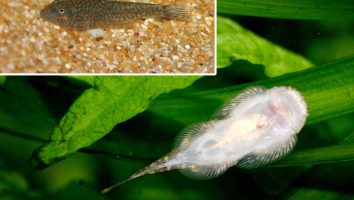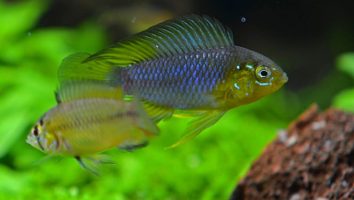The firemouth cichlid is a beautiful freshwater fish that is popular among aquarists of all levels of experience.
This fish is relatively easy to care for, and is a great addition to any community tank. They are peaceful fish, but can be aggressive towards other fish if they feel threatened.
Firemouth cichlids are omnivores, and will eat a variety of food. In the wild, they eat small invertebrates, crustaceans, and small fish. In captivity, they should be fed a diet of high quality pellets, flakes, and frozen foods.
Table of contents
Species overview
The firemouth cichlid (Cichlasoma meeki) is a popular freshwater fish that’s native to Mexico and Guatemala.
They prefer habitats with a lot of vegetation and hiding places. This could be in the form of rocks, driftwood, or plants.
Firemouth cichlids are relatively peaceful fish but can be territorial toward their own species. It’s best to keep them in pairs or groups of odd numbers so that they have less of a chance of fighting.
These fish are known for their bright red coloration on the underside of their mouths. This is thought to be a way of intimidating potential predators or rivals.
Appearance
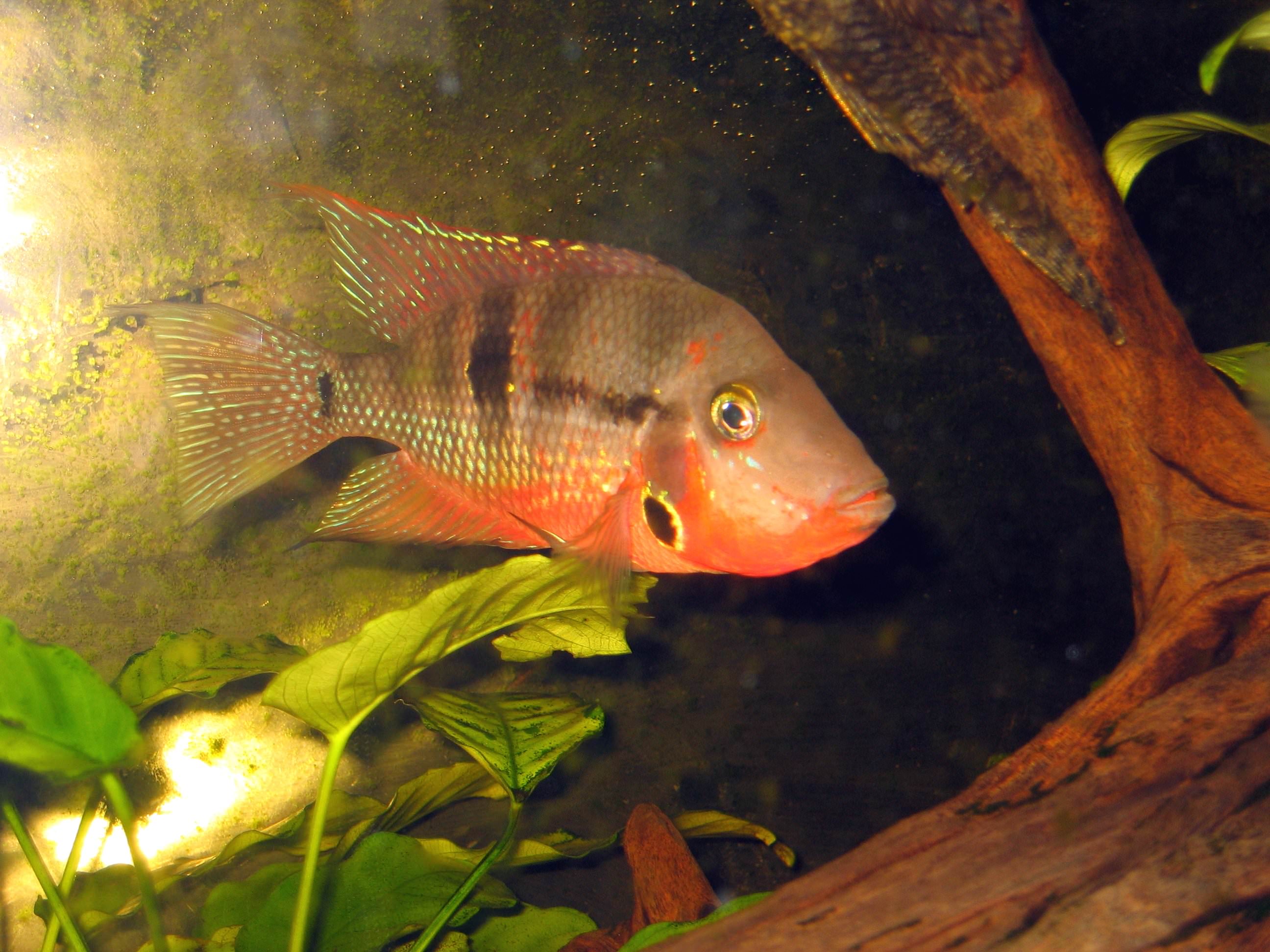
The first thing you’ll notice about the Firemouth cichlid is their vibrant coloration. The body of this fish is a deep crimson red that extends from their head all the way to their tail fin.
There is a black stripe that runs vertically along their sides (from gills to caudal peduncle). This stripe is usually bordered by a thin line of white.
The fins on the Firemouth cichlid are also red, but they have a black trim that extends along the edges. The dorsal and anal fins are tall and somewhat pointy.
The caudal fin is forked and relatively large compared to the rest of their body.
This fish has a long and thin body shape that tapers off at the tail. The head is large and somewhat triangular with a large mouth that opens quite wide.
The eyes on the Firemouth cichlid are orange with black pupils. They have a small barbel on each side of their mouths.
Lifespan
The average lifespan of a firemouth cichlid is around 6 to 8 years. However, with proper care, they can live up to 10 years or even longer.
As with any other fish, there are a number of factors that can impact the lifespan of a firemouth cichlid. Poor water quality, for instance, can lead to a shorter lifespan.
These fish are also susceptible to a number of diseases. If not treated properly, these diseases can be fatal.
Size
The average Firemouth cichlid size is around 6 to 8 inches, with some specimens reaching up to 9 inches. Females are typically a bit smaller than males, but both genders can reach the same max size. As long as you provide them with a spacious tank, these fish can grow to their full potential.
Tank
Tank Size
The recommended tank size for firemouth cichlids is 40 gallons. If you’re planning on keeping more than one fish, you should add an additional 20 gallons for each fish.
It’s also important to note that these fish like to dig and may uproot plants in your tank. If you want to keep plants in your tank, we recommend choosing plants that are hearty and can withstand a little bit of abuse.
Water Parameters
The firemouth cichlid is a beautiful freshwater fish that’s relatively easy to care for. As long as you maintain proper water conditions, you should have no problem keeping this species healthy and happy.
One of the most important things to remember with the firemouth cichlid is that it’s a tropical fish. That means it needs warm water to thrive. The ideal water temperature for a firemouth cichlid is between 75 and 80 degrees Fahrenheit.
The firemouth cichlid is also a bit sensitive to water changes. It’s best to do them gradually to avoid stressing the fish out.
Here are a few other water parameters to keep in mind when caring for a firemouth cichlid.
- pH levels: 7.0 to 8.5
- Water hardness: 10 to 25 dGH
- Alkalinity Levels: 4-12 dKH
What To Put In Their Tank
Firemouth cichlids are one of the easier fish to take care of on this list. Not only are they relatively tough, but they don’t require a ton of space or a lot of special conditions to thrive.
When it comes to the inside of their tank, there are a few key things you’ll want to include.
First off, these fish love to dig. It’s not uncommon for them to uproot plants or move around rocks in their search for food. Because of this, you’ll want to use a substrate that’s soft and won’t hurt their delicate fins (sand is a good choice).
You should also include some hiding spots for them to escape to when they feel threatened. Driftwood, caves, and rocks all make great places for them to hide.
Plants are a bit of a touchy subject with these fish. They will eat plants if given the chance, but there are some that are more resistant to their nibbling (like Java Fern or Anubias).
You can try your luck with plants, but don’t be surprised if they end up as a snack.
Common Diseases
As with most other fish, the firemouth cichlid is susceptible to a number of diseases. The most common ones are ich, hole-in-the-head disease, and parasites.
Ich is by far the most common, and it’s also the most dangerous if left untreated. This disease will present itself as white spots on the body of your fish.
If you notice this, it’s important to act fast and begin treatment immediately. There are a number of different ways to treat ich, but the most important thing is to do something quickly.
Hole-in-the-head disease is another common illness in firemouth cichlids. This is caused by poor water quality and the presence of activated carbon in the tank.
This disease will present itself as one or two pits/holes in the skin of your fish’s head. While it’s almost always curable, it will usually leave some scarring on your poor fish!
The best way to prevent these diseases is to simply maintain a high level of water quality in your tank. A clean and stable environment is the best way to keep your fish healthy and disease-free.
Behavior & Temperament
The firemouth cichlid is a beautiful fish that’s known for its aggressive behavior. In the wild, these fish are highly territorial. They’ll attack anything that comes near their area, including other firemouth cichlids.
In an aquarium, they’ll still exhibit this behavior. It’s best to keep only one firemouth cichlid per tank unless you have a very large aquarium. Even then, you might still run into some problems.
These fish are also known to be fin-nippers. They’ll bite the fins of other fish, which can lead to serious injury. If you have a fish with long fins, it’s best to avoid keeping a firemouth cichlid with them.
The firemouth cichlid is a hardy fish, but it’s also very sensitive to changes in its environment. Even a small change can lead to stress, which can cause the fish to become even more aggressive.
Tank Mates
The firemouth cichlid is a semi-aggressive fish that’s best kept with other cichlids or fish of a similar size. These fish can be territorial, and they’re known to nip at the fins of other fish.
While they’re not the most aggressive cichlids out there, they can still hold their own in a fight. As a result, it’s best to avoid tank mates that are small or timid.
Some good tank mates for firemouth cichlids include:
- Convict Cichlid
- Jack Dempsey Cichlid
- Green Terror Cichlid
- Blood Parrot Cichlid
- Oscar Cichlid
- Plecostomus
- Synodontis
- Catfish
Breeding
Firemouth cichlids are pretty easy to breed in captivity. They’re mouthbrooders, so the female will carry the eggs and fry in her mouth until they’re ready to be on their own.
The first step is to set up a breeding tank. It should be at least 30 gallons and contain plenty of hiding places. Driftwood, rocks, and caves all work well.
Then, you need to adjust the water conditions. The pH should be between 7.0 and 8.0. The water hardness should be between 10 and 20 dGH. And the temperature should be between 78 and 82 degrees Fahrenheit.
When everything is ready, add two females for every male. Then, feed them a diet of high-quality foods.
Once the fish are well-fed and comfortable, the female will start to lay eggs. She’ll deposit them in a hidden area of the tank, and the male will fertilize them.
After that, the female will pick up the eggs in her mouth and carry them around until they hatch. This process takes about two weeks.
Once the fry have hatched, you can start to feed them baby brine shrimp and other small foods. The female will continue to care for them until they’re big enough to fend for themselves.
Conclusion
The Firemouth cichlid is a great fish for anyone who wants to add a little bit of spice to their life. They’re not the easiest fish to care for, but they’re definitely not the hardest either.
With a little bit of patience and commitment, you can successfully care for a Firemouth cichlid and have a beautiful and rewarding fish.

